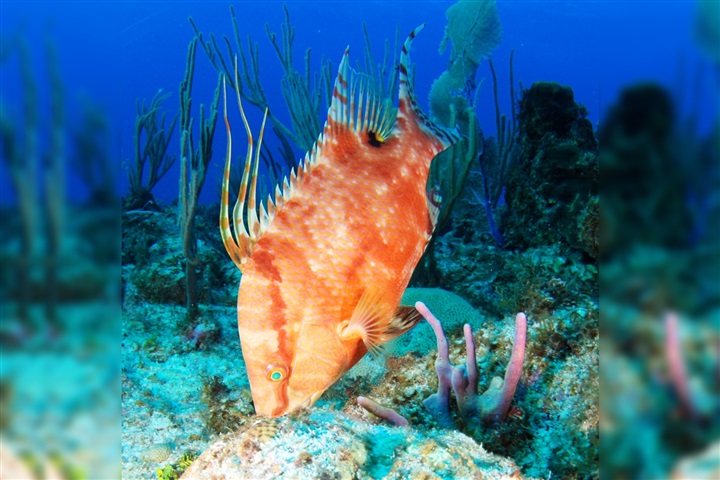Lachnolaimus maximus


| Latin name | Lachnolaimus maximus |
|---|---|
| Local name | Hogfish |
| Family | Labridae - Lachnolaimus |
| Origin | The Mexican Golf, West Atlantic |
| Max length | 91 cm (35.8") |
| Minimum volume |
3000 l (792 gal) |
|---|---|
| Hardiness |
Hardy |
| Suitable for aquarium |
Suitable with care |
| Reef safe |
Reef safe with caution |
| Aggressiveness | Might be aggressive towards other species |
| Recommended |
Fish Larger crustaceans (Shrimp, crabs...) Other invertebrates Small crustaceans (Krill, mysis, artemia...) |
|---|
This spicies might be a threat to smaller fishes.
These fish will hunt crustaceans, sea urchins and worms in an aquarium, very effectively.
This species searches through the sand for food, which can make the water cloudy and shakes up detritus.
In an aquarium their natural food source in the sand is quickly exhausted.
This species needs a very large aquarium when fully grown.
Exactly how big the aquarium should be is hard to say, but the size of this species is such, that it cannot normally be kept in a home aquarium.
This species needs good hiding places, for example, between live rocks.
This species revels in swimming and requires an aquarium with ample space.
Wrasses are nearly always seen in reef aquaria, since many of the species are both attractive and useful in battling a range of unwanted invertebrates like i.e. flatworms, pyramide snails.
These fish live of everything from zooplankton to large crustaceans, sea urchins and the like.
The needs and behaviour of Wrasses vary greatly, so it is vital to familiarize oneself with the specific species before buying one.
Scott W. Michael. 2009. Wrasses and Parrotfishes (Reef Fishes Series Book 5) - TFH Publications / Microcosm Ltd. - (English)

